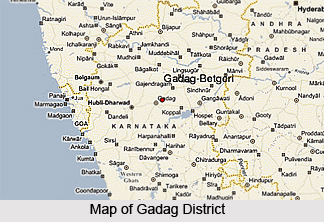 Administration of Gadag District falls under the overall supervision of the Deputy Commissioner. The district is the principal administrative unit below the state level. It is a unit of administration covering most of the departments of Government. Most departments of the state Government out-side the secretariat, have external services which are located in the district. The sum totals of the activities of these departments and some others, which may also be connected with the affairs of the Central Government, together constitute the administrative machinery in the district. The block and village level bodies are generally executive in nature, while the district level body mostly has a co-ordinating and supervisory role.
Administration of Gadag District falls under the overall supervision of the Deputy Commissioner. The district is the principal administrative unit below the state level. It is a unit of administration covering most of the departments of Government. Most departments of the state Government out-side the secretariat, have external services which are located in the district. The sum totals of the activities of these departments and some others, which may also be connected with the affairs of the Central Government, together constitute the administrative machinery in the district. The block and village level bodies are generally executive in nature, while the district level body mostly has a co-ordinating and supervisory role.
The office of the Deputy Commissioner of Gadag District consists of various branches headed by Shirstedars or managers who are responsible for supervision, guidance and overall management of the work in their branch. Every branch consists of First Division Assistants and Second Division Assistants among whom all work of the branch is divided. There are various officials both at the district level and at the taluk levels to assist the Deputy Commissioner. They include the Assistant Commissioners (Sub-Divisional Magistrate), Tahsildars, Shirstedars, Revenue Inspectors and Village Accountants.
The Deputy Commissioner Court deals with cases pertaining to Revenue Appeals, Revenue Miscellaneous ( KLR Act, 1964 ), Prohibition of transfer of Certain Lands cases ( PTCL Act,1978 ) and inam cases( Inam Abolition Act ). One SDA and Manager of Judicial Branch assist the Deputy Commissioner by doing back office work
To facilitate administration at the grassroots level, there is found a Zilla Panchayat which looks to the administration and implementation of policies in the rural areas. To facilitate greater discussion in the functioning of Zilla Panchayat, 5 standing committees have been formed. Those Committees are Finance Committee, Social Justice Committee, Standing Committee, Agriculture and Industries Committee and Education and Health Committee. Each standing Committee consists of Zilla Panchayat members not exceeding seven Members including the chairman, who are elected by the Zilla Panchayat from among the elected members.
There are various other departments that look to particular social concerns. These are -
Animal Husbandry Department, Sports and Youth Services Department, Health Services etc.



















